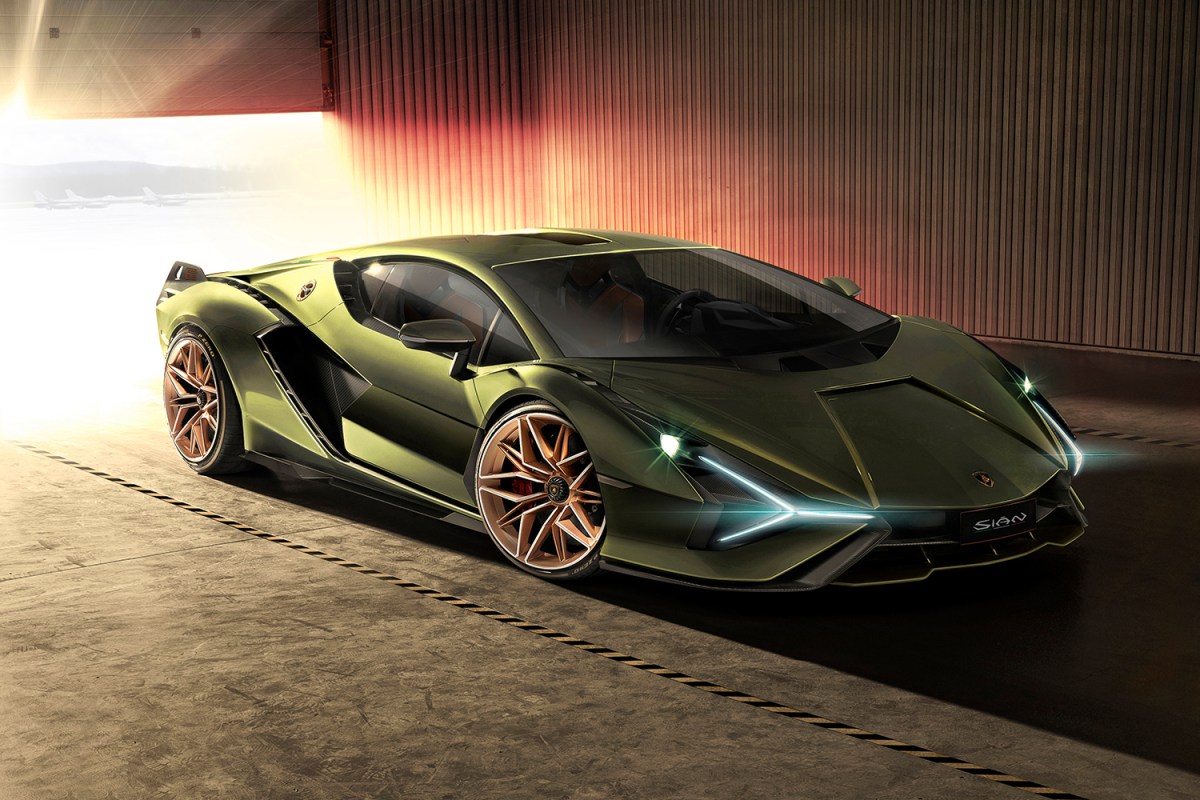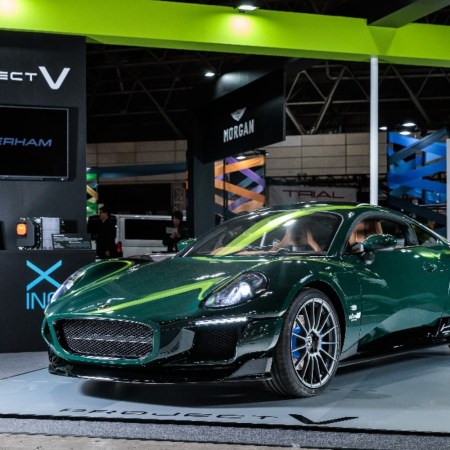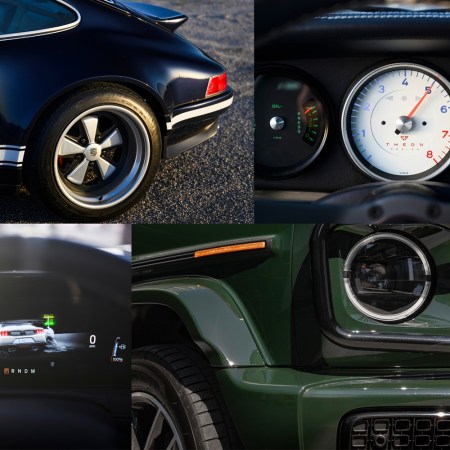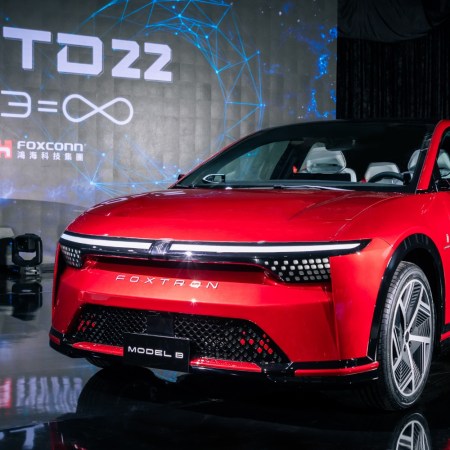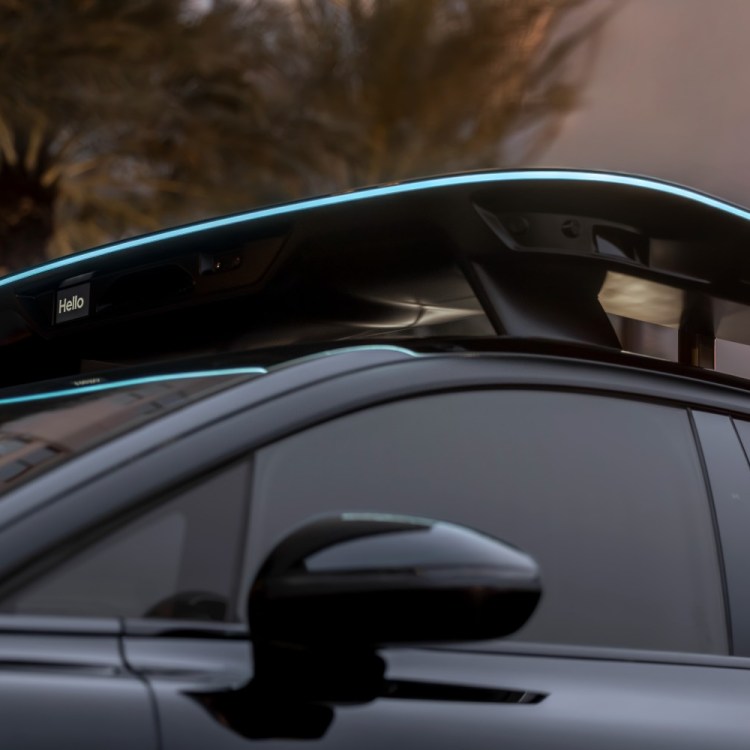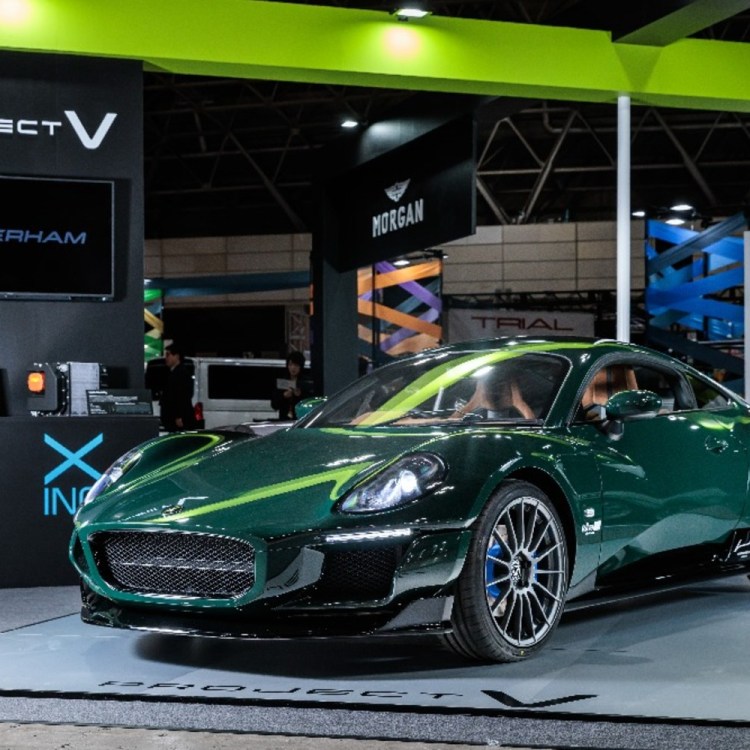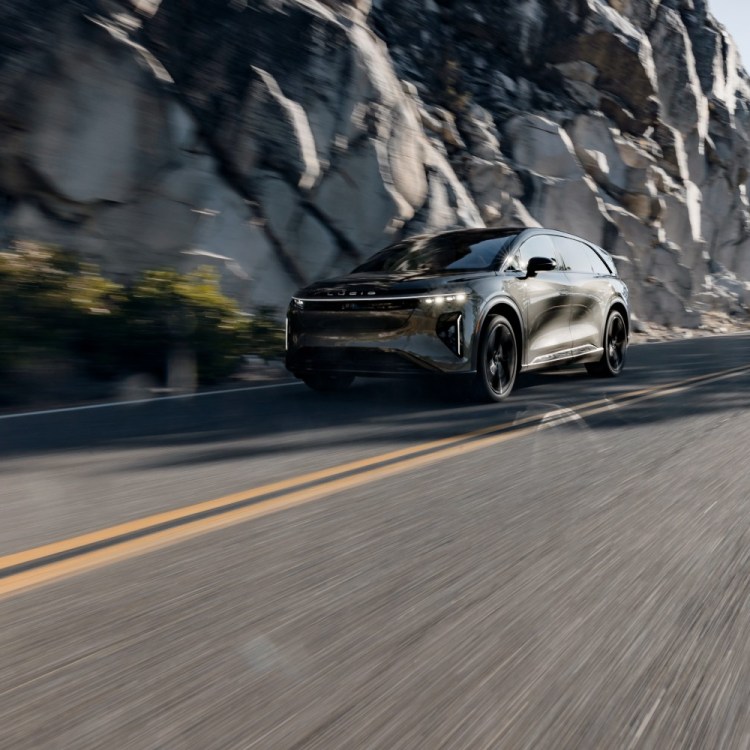Today, Lamborghini introduced a new supercar called the Sián. Any new release out of Sant’Agata Bolognese is exciting, but this particular vehicle marks multiple firsts both for the marque and the car world as a whole: it’s Lamborghini’s fastest and most powerful production car ever, it’s using supercapacitors in a brand new application, and it’s the brand’s first foray into electrification.
The Sián — translating to “flash” or “lightning” in Bolognese dialect — is a hybrid. And it single-handedly puts the final nail in the coffin of “hybrid” being a dirty word in the automotive word (that is, cleaner running but lackluster in experience).
By pairing a 6.5-liter naturally aspirated V12 engine (the same used in the Aventador line, as Motor1 notes) with a 48 volt electric motor, the Sián tops the brand’s horsepower charts with 819 HP and the acceleration charts with a 0 to 62 MPH time under 2.8 seconds. Basically, all that instantly available torque you’ve heard about from electric vehicles is being put to good use here — it has the lowest weight-to-power ratio of all the marque’s V12 vehicles.
There is one obvious conundrum that presents itself, and that is: If electrified vehicles weigh more than traditional gas-powered vehicles because of batteries (even smaller ones used in hybrid vehicles), how is it that the Sián can achieve these records with a battery and what appears to be a relatively small motor? It’s because the car doesn’t use the traditional nickel metal hydride (NiMH) or lithium-ion batteries you’re used to hearing about in vehicles like a Toyota Prius or Tesla. It uses supercapacitors.
If you’ve never heard of supercapacitors, Car magazine recently wrote an explainer of the technology, but basically “rather than storing energy in the form of chemicals, supercapacitors store electricity in a static state, making them better at rapidly charging and discharging energy.” Here, it weighs much less than a battery would and offers three times the power (compared to the weight). Supercapacitors can’t hold a charge as long as batteries can (yet), but in a hybrid like the Sián, they offer many benefits, including proprietary regenerative braking which fully charges the system “every time the vehicle brakes,” according to a press release.
So there’s a lot to love, and learn, about the Sián right out of the gate. But the car will make its official public debut at the Frankfurt Motor Show, which begins on September 12th, so more details (and real photos) are on the way soon.
Unfortunately for any interested buyers, more models of the Sián are not on the way. As Motor1 points out, there is a “63” badge on the carbon fiber fins — a number that denotes how many versions of the vehicle will be offered to the public. In the press release unveiling the car, Lamborghini also announced that all 63 units have already been sold.
Editor’s Note: RealClearLife, a news and lifestyle publisher, is now a part of InsideHook. Together, we’ll be covering current events, pop culture, sports, travel, health and the world. Subscribe here for our free daily newsletter.
Thanks for reading InsideHook. Sign up for our daily newsletter and be in the know.
